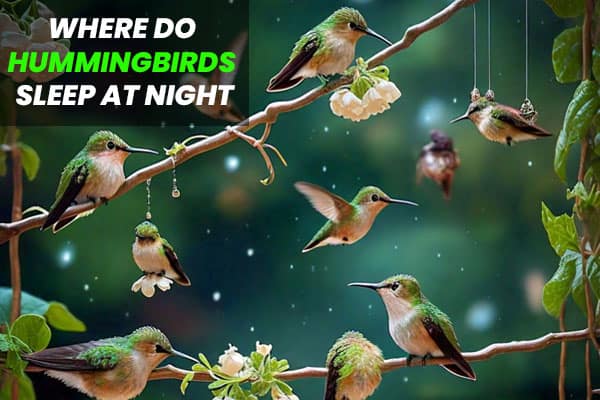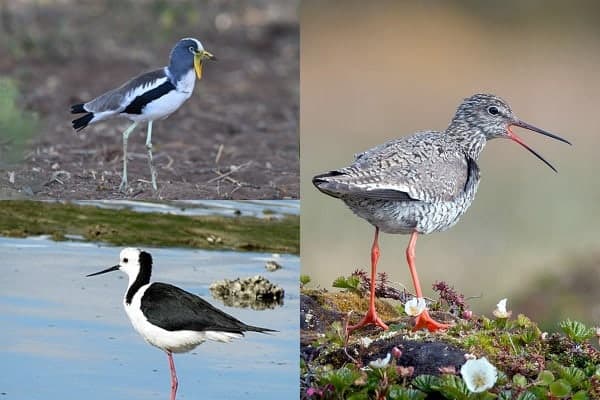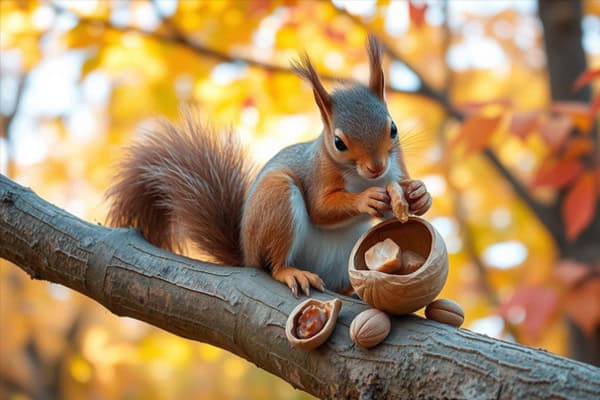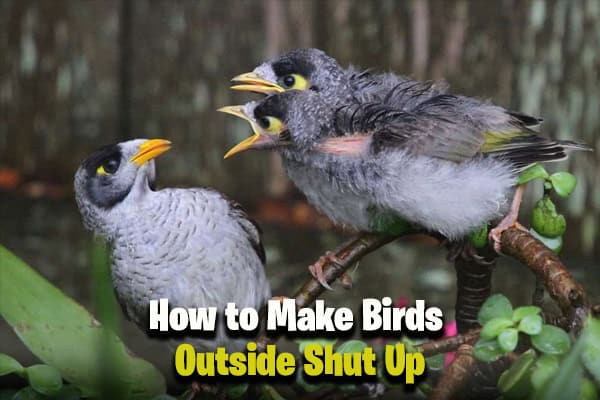Top 10 Tips for Creating a Bird-Friendly Garden and Yard
Do you wish your yard was a haven for the birds that brighten our skies? Creating a bird-friendly garden is easier than you might think. By focusing on food, water, and shelter, you can make your yard a home for local birds.
Choosing the right plants and planning your Bird-Friendly Garden layout are key steps. But where do you start? Dive into our guide to learn the top 14 strategies for a bird-friendly yard. Your feathered friends will thank you.
Choose Native Plants
When making a bird-friendly garden, pick native plants that fit your local climate and soil. These plants are tough and will grow well with little care. They give birds the best food all year.
Provide a Variety of Food Sources
Choose a mix of native plants that help birds in different ways. Trees like oaks, maples, and willows are full of caterpillars, which birds need for their young. Add shrubs like serviceberry, dogwood, and spicebush that have berries at various times.

Plant flowers like coneflowers, asters, and sunflowers for seeds that finches and sparrows love. Include nectar-rich flowers like columbine, penstemon, and honeysuckle to draw in hummingbirds.
This mix of native plants for birds, from native trees and shrubs to bird food sources, makes a strong, self-supporting plant diversity in your garden. It supports a healthy bird population.
Plan Your Bird Habitat
Before you start, assess your yard’s conditions. Look at the sun and shade, soil type, and moisture levels. These will help you choose the right plants. Notice any existing native plants you have. They can be the base of your bird-friendly garden.
Plan your garden with different layers, from tall trees to low groundcovers. This setup mimics nature and offers birds shelter, nesting spots, and food. Aim for large areas of native plants, not small spots. This makes your Bird-Friendly Garden more welcoming for birds.
Consider Your Space and Existing Plants
When assessing your space, think about how big plants will get. Space them right to prevent crowding. A well-thought-out plan can turn your yard into a great place for birds. It will draw in many species.
| Factor | Considerations |
|---|---|
| Sun/Shade Patterns | Identify areas of full sun, partial shade, and full shade to guide plant selection. |
| Soil Type | Determine if your soil is sandy, clay, or loamy, and choose plants that thrive in those conditions. |
| Moisture Levels | Assess areas that are consistently wet, dry, or have average moisture to inform your plant choices. |
| Existing Native Plants | Identify any native species already growing in your yard and incorporate them into your plan. |
By carefully evaluating your space and conditions, you can make a bird habitat that fits your yard and helps local birds.
Prepare Your Garden for Planting
Getting your garden ready is key for its long-term success. If your garden has turf grass or invasive plants, remove them first. Use wet newspaper or cardboard, topped with 4-6 inches of site-clearing mulch. This method will kill off the old plants and prepare the soil for new ones.
Adding compost to the soil can also help. This is especially true if your soil lacks nutrients or drains poorly. Use edging to mark where your native plants will grow. Doing this well helps your new plants grow strong and attract birds.
| Garden Preparation Steps | Benefits |
|---|---|
| Remove Turf Grass or Invasive Plants | Clears the way for new native species to be planted |
| Layer Newspaper/Cardboard and Mulch | Smothers existing vegetation and creates a clean planting area |
| Amend Soil with Compost | Improves nutrient content and drainage for healthier plants |
| Use Edging Materials | Clearly defines the native plant area from the remaining lawn |
Spending time to prepare your garden helps your new plants grow well. It also makes a great home for birds.
Plant in Spring or Fall
Timing is key when planting native plants in your garden. Spring and fall are the best times to plant. These seasons help your plants grow strong and deep roots before harsh weather hits.
Spring lets your native plants grow all summer before their first winter. This gives them a strong start against summer heat and winter cold. They’re set for long-term success in your garden.
Fall planting uses the mild autumn months for root growth. This prepares your plants to grow fast when spring comes. It makes sure they’re ready for the growing season demands.
Choose your planting season, but always follow the plant’s specific instructions. It’s important to water new plants regularly for their native plant establishment. With the right optimal planting seasons and care, your native plants will flourish. They’ll make a great home for the birds you want to attract.
Care for Your Native Plant Garden
Looking after a bird-friendly garden is easy and doesn’t need to take up much time. Native plant gardens are often easy to care for once they start growing. The main idea is to care for them gently and avoid harsh pesticides.
Don’t clean up too much. Let leaves, twigs, and flower heads fall where they are. They offer shelter and food for birds and wildlife. Just remove any weeds that aren’t native but don’t touch the native plants.
Avoid using pesticides to manage pests. They can hurt the good insects that birds eat. Let nature balance out pests in its own ways. Remove dead flowers, but keep some seed heads for birds to eat in the fall and winter.
This way of caring for your garden helps create a place that’s great for birds. It supports many bird species every year without needing harsh pesticides.
| Garden Task | Recommended Approach |
|---|---|
| Leaf and Twig Cleanup | Leave them in place to provide shelter and food |
| Weed Control | Remove non-native, invasive weeds, but leave native plants |
| Pest Management | Allow natural predators to control pests, avoid pesticides |
| Deadheading | Remove spent flower heads, but leave some seed heads |
Diversify Plants for Year-Round Blooms
To make a Bird-Friendly Garden that’s lively all year, pick a mix of native plants that bloom at different times. This way, there’s always something for birds to enjoy, supporting a continuous bloom cycle and four-season bird habitat.
Flowering Plants for Each Season
In spring, early bloomers like columbine and wild strawberry welcome hummingbirds and pollinators. Summer brings beebalm, black-eyed Susan, and purple coneflower, attracting many birds. As fall comes, asters and zinnias offer nectar and seeds. Finally, holly and winterberry shrubs provide berries in winter.
Planning for seasonal plant diversity makes your backyard a four-season haven for birds. This boosts the continuous bloom cycle and supports a broader four-season bird habitat.
| Season | Blooming Plants | Attracted Birds |
|---|---|---|
| Spring | Columbine, Wild Strawberry | Hummingbirds, Pollinators |
| Summer | Beebalm, Black-eyed Susan, Purple Coneflower | Various Bird Species |
| Fall | Asters, Zinnias | Seed-eating Birds |
| Winter | Holly, Winterberry | Overwintering Birds |
Avoid Invasive Plants
Creating a bird-friendly garden means watching out for invasive plants. These plants can take over and harm the native species that birds and wildlife need. It’s crucial to research and remove invasive plants in your area to protect your garden.
For a healthy bird habitat, fill your garden with native plants. If you want to grow an invasive plant, choose a native one instead. Native plants offer the best food and shelter for birds and fit the local climate and soil well. They also need less care over time.
Keep your garden healthy by weeding and watching for invasive plants. With some effort, you can have a bird paradise in your yard without invasive species.
| Invasive Species to Avoid | Native Plant Alternatives |
|---|---|
| Autumn Olive (Elaeagnus umbellata) | Serviceberry (Amelanchier spp.) |
| Japanese Honeysuckle (Lonicera japonica) | Virginia Creeper (Parthenocissus quinquefolia) |
| Multiflora Rose (Rosa multiflora) | Pasture Rose (Rosa carolina) |
Choose native plants and watch out for invasive ones to make a bird-friendly garden. With a bit of work, you can have a beautiful, low-maintenance garden that supports local wildlife.
Replace Some Lawns with Plants
A lush, green lawn may look nice, but it’s not great for birds or wildlife. Think about changing part of your lawn to native plants that help local birds. Even a small change can make a big difference.
Removing the usual grass and adding plant heights, textures, and food sources helps birds a lot. They’ll find shelter, places to perch, and lots of food in a planted area. This is much better than a plain lawn.
With careful planning, you can keep nice paths or spots for people while making your yard better for birds and pollinators. Reducing lawn area and creating wildlife habitat with diverse plantings turns your yard into a haven for local birds.
- Consider replacing a portion of your lawn with native plants.
- Introduce a variety of plant heights, textures, and food sources to create a thriving bird habitat.
- Maintain attractive pathways or gathering spaces while boosting the ecological value of your yard.
- Reduce lawn area and create wildlife habitat with diverse plantings.
Offer Variety in Plant Structures
Creating a diverse landscape with varied plant structures is key to attracting many bird species to your backyard. By using vertical layering, you can give birds the habitats and resources they need to do well.
Begin with tall canopy trees that offer nesting and roosting spots high up. Add mid-sized shrubs for shelter, protection, and food at mid-levels. Then, include low-growing groundcovers for seeds, berries, and insects near the ground.
This mix of plants mimics the natural environments where birds live well. By creating a bird-friendly landscape with different heights, you’ll draw more birds to your yard.
To add more variety, think about adding birdhouses, perches, and brush piles. These bird-friendly landscape elements give birds more places to nest, roost, and find food.
By planning your garden’s height and plant variety, you’ll make your outdoor space a haven for birds. It will be a place where birds can flourish and you can enjoy watching them.
Create Bird-Friendly Garden
By carefully adding the right elements, you can turn your yard into a lively bird-friendly garden. Pick a mix of native plants that give birds food, shelter, and places to nest all year. Arrange your garden with different heights, from tall trees to low groundcovers, to help various birds.
Get your garden ready and plant at the best time for your plants to grow well. Keep your Bird-Friendly Garden natural by not using pesticides and not cleaning too much. With a thoughtful, ecologically-focused landscape, many bird species will make your backyard their home.
- Incorporate a mix of native plants that provide food, shelter, and nesting sites for birds
- Plan your garden layout with vertical layers to support a diverse range of bird species
- Prepare the planting area and time introductions for optimal plant establishment
- Maintain your native garden with a gentle approach, avoiding pesticides and excessive tidying
| Feature | Benefit |
|---|---|
| Native Plant Diversity | Provides a variety of bird habitat features to support different bird species |
| Vertical Layering | Creates a more integrated landscape design that caters to the needs of diverse birds |
| Minimal Maintenance | Allows for a more natural, self-sustaining bird habitat to thrive |
Support Birds and Pollinators
Creating a bird-friendly garden helps more than just birds. It supports a whole ecosystem of important creatures. The native plants you pick offer food and shelter for butterflies, bees, and moths. These pollinators then help keep your plants healthy and productive.
Also, the insects that birds eat will do well in your garden without pesticides. By supporting this web of life, you’re helping your local environment. Your garden becomes a home for many living things.
Picture the joy of watching hummingbirds fly from flower to flower. Or the thrill of seeing a monarch butterfly in your garden. These are the joys of having biodiversity in your backyard.
- Attract a variety of pollinators with native plants
- Provide a safe, pesticide-free environment for insects
- Contribute to the overall ecological balance of your local community
Supporting birds and pollinators makes your garden vibrant and beautiful. It also helps keep nature in balance. So, start making a difference, one native plant at a time.
Related Articles
| Best Bird Bath Fountain Ideas |
| How To Paint A Concrete Bird Bath? Useful Tips |
| How to Keep Mosquitoes Out of Bird Bath Naturally? |
| What Are Safe Paints for Bird Baths? |
| Bird Bath Guide |
Final Thoughts on Creating a Bird-Friendly Garden
Turning your outdoor area into a bird paradise is both fulfilling and beneficial. Use native plants that give birds food, shelter, and places to nest. This makes your backyard a great place for birds.
Plan your garden carefully, thinking about your garden’s conditions and the different plants you need. This way, you’ll attract many bird species. Make sure to prepare the soil well and plant at the best time for your plants.
Keep your garden healthy but gentle, letting it become a self-sustaining ecosystem. With a garden that welcomes birds, you’ll see many different species all year. This also helps pollinators and other wildlife.
Your Create Bird-Friendly Garden will help local conservation and bring you joy as you watch birds live there. By gardening for birds, you support nature and create a haven for birds. This makes your outdoor space a true sanctuary for nature’s birds.






